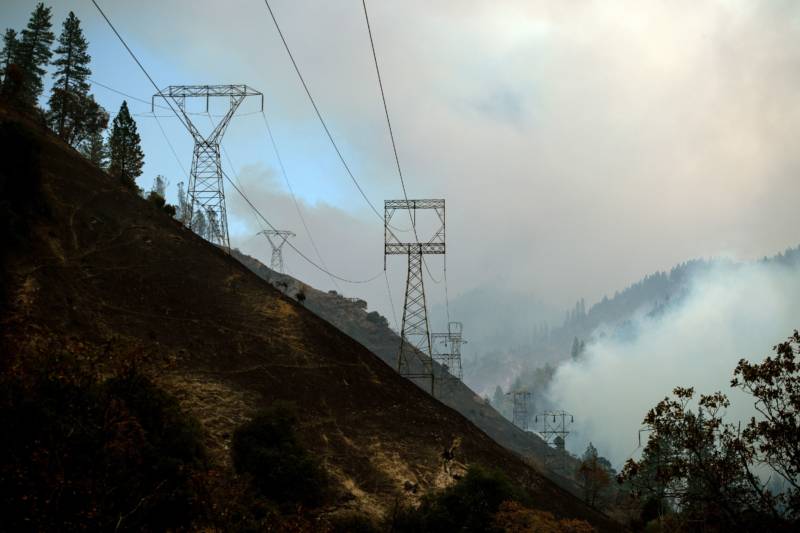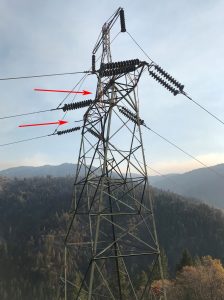I went down the rabbit hole this morning, finding all about the origins of last year’s Camp Fire, the most destructive fire in California’s history. The cause has been traced to faulty equipment on a high-voltage transmission tower. Being a geek, I wanted to learn more about the technical aspects of this part, so I dug up some informative articles.
First, here’s the start of an informative story on the disaster itself:
PG&E has released new details of damage to its electrical equipment in the area where Butte County’s catastrophic Camp Fire began last month — including a broken power pole “with bullets and bullet holes at the break point.”
The new information is included in a letter updating the California Public Utilities Commission on a pair of electrical incidents that occurred Nov. 8 about the same time the fire started and began to race toward the town of Paradise.
One of the incidents occurred at 6:15 a.m. on a major electrical transmission line suspended on a series of high steel towers on a steep slope above the North Fork of the Feather River. PG&E’s new letter suggests that a large steel hook connecting high-voltage equipment to a tower near the utility’s Poe Dam failed, causing the equipment to arc.
Source: PG&E Details Damage to Power Lines in Area Where Camp Fire Began | The California Report | KQED News
Next, there’s this ArsTechnica story that got me going:
“Although the cause of the 2018 Camp Fire is still under investigation, based on the information currently known to the company and reported to the California Public Utilities Commission (CPUC) and other agencies, the company believes it is probable that its equipment will be determined to be an ignition point of the 2018 Camp Fire,” PG&E told investors.
The utility goes on to state that its Caribou-Palermo 115 kilovolt (kV) transmission line deenergized approximately 15 minutes before a PG&E employee observed a fire in the vicinity of a tower on the line. In addition, “a suspension insulator supporting a transposition jumper had separated from an arm” on the tower in question.
Here’s a link to a lawsuit against PG&E [PDF] which includes photographs of the damaged equipment.
Here’s a fantastic look from ElectricalEasy.com at the insulators used with high-voltage power lines:
Suspension insulators
As it is already mentioned above, pin insulators become too bulky an uneconomical beyond 33 kV. So, for voltages higher than 33 kV, suspension insulators are used. A suspension insulator consists of a number of porcelain discs connected to each other with metal links in the form of a string. Line conductor is suspended at the bottom end of the suspension string which is secured to cross-arm of the tower. Each disc in a suspension insulator string is designed for a low voltage, say 11 kV. The number of discs in a string depends on the working voltage. Suspension insulators are preferred for transmission lines.
The San Jose Mercury News has a fantastic, fact-filled story on the failure of the tower:
Now a month after the blaze first roared to life along the North Fork of the Feather River, near the resort town of Pulga, sources familiar with a Cal Fire probe say investigators are zeroing in on this “transpositional” tower that helps switch power among transmission lines on the Caribou-Palermo circuit, originally built in 1919. The focus is on whether a tiny O-ring that holds up rows of disc-shaped insulators, or possibly fatigued steel from one of the tower’s arms, caused the accident.
Caribou-Palermo Transpositional tower. The red arrows point to the remnants of “jumper cables,” which transfer power from line to another. (photo by Dario de Ghetaldi)
“It’s there that the likely (O-ring) connection failed,” said Dario de Ghetaldi, an attorney suing PG&E on behalf of dozens of residents who lost their homes in the Camp Fire. “It could also be corrosion on the support extension. This is high in the mountains, you get very strong winds and they had extreme winds that night.”

